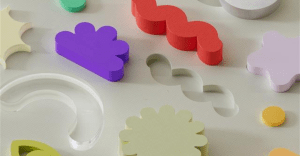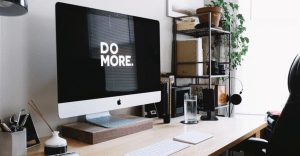Rethinking the design process: adding an extra why
Good design is sustainable design.
Sustainability is increasingly prevalent in creative briefs and client conversations. Here at bluemarlin we believe it is our duty to come up with viable solutions.
As Executive Creative Director of bluemarlin I think designers are in the best position to lead the charge. Personally, they’re thinking and acting as consumers and professionally they’re creative partners directing and inspiring brands that live in the hand heart and mind.

Most industries are starting to consider the origin of their materials, looking into more sustainable manufacturing processes, or the welfare of the people involved in their businesses – all because consumers are demanding it.
After decades of excess, the film industry has finally been asking ‘why’ and sharpening its focus on sustainable production. Recently “The Amazing Spider-Man 2” earned a carbon neutral certification, saving an estimated $400,000 by ‘going green’. We are seeing that Closed Loop fashion is at last impacting the fashion industry, even the worst high street perpetrators are having to pay attention.
We need to ask ourselves those same questions.

How can we do more to drive sustainability issues?
My consumer self does its bit for the planet – recycling, avoiding single use plastics, turning the thermostat down, washing at 30˙, using public transport – the list goes on. But my designer self can certainly make improvements.
On a personal level I make sure to use recycled paper (bank statements, utility bills etc) as sketch books and note taking. I make sure where possible to avoid printing anything, I even use re-fillable pens. Please don’t think I’m a ‘Sustainability Saint’ though as I send too many emails, store too many large digital files in the cloud, use multiple devices, and multiple power sources.

What I am really interested in, is sustainability in the creative process, this is where the real challenge lies. If we start every project with sustainability front of mind, we force ourselves to make different choices throughout.
Why choose those specific colours? Do they help accessibility, reduce digital contrast ratio and therefore energy consumption, or do they reduce print costs and improve recyclability? Why recommend that structure or those material and that fabric? Everything we do has a footprint and this should become an integral part of answering a brief now and in the future.

Are the design industry doing enough?
There are pockets of excellent practice, inspiring initiatives, manifestos, awards, and celebrated appointments. For me the fundamental challenge of putting sustainability at the heart of everything we do is to completely rethink the design process and outcome. For designers, this is the first seismic shift since the dawn of digital with new tools, skills, behaviours and education only just beginning to emerge. Of course, some could consider this as a constraint, but as we have discussed in The freedom in constraint thoughtpiece, less really can be more. I truly believe it is a rewarding creative endeavour to work out how to be sustainable on a daily basis.
It’s difficult, it’s complicated and uncomfortable but surely that’s the point of being a designer. So let’s get to work, let’s do our best for our clients, for ourselves but most importantly for the future of our planet.

Get in touch with Tony directly to continue the conversation: tonyfox@bluemarlinbd.com
